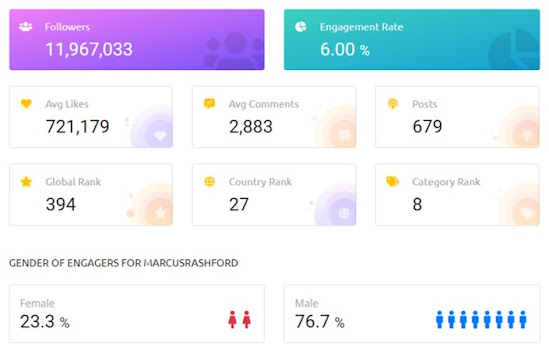OSP: Rashford & Kardashian - Audience and Industry

This will focus more on how technology, the internet and social media have changed society and culture for audiences and industries. Audience Target audience: demographics and psychographics What is the target audience for two CSPs? Demographics: CAGE? Psychographics? Audience engagement Instagram engagement rate is a measure of how much audiences engage with posts (e.g. likes, comments). An engagement rate of 1-3% is considered good and anything 6%+ is extremely high. Marcus Rashford’s power as an influencer is shown by his engagement rate of 6% (although recently this has dropped to 3.2% due to increasing his follower count and focusing more on football rather than his brand development). Source: https://starngage.com/app/gb/influencers/marcusrashford Kim Kardashian's engagement rate is lower at 0.33% but she has over 350 million followers so can still reach and engage with huge audiences. Celebrity influences: appeal to aud...
